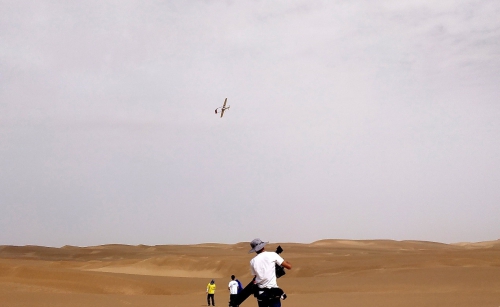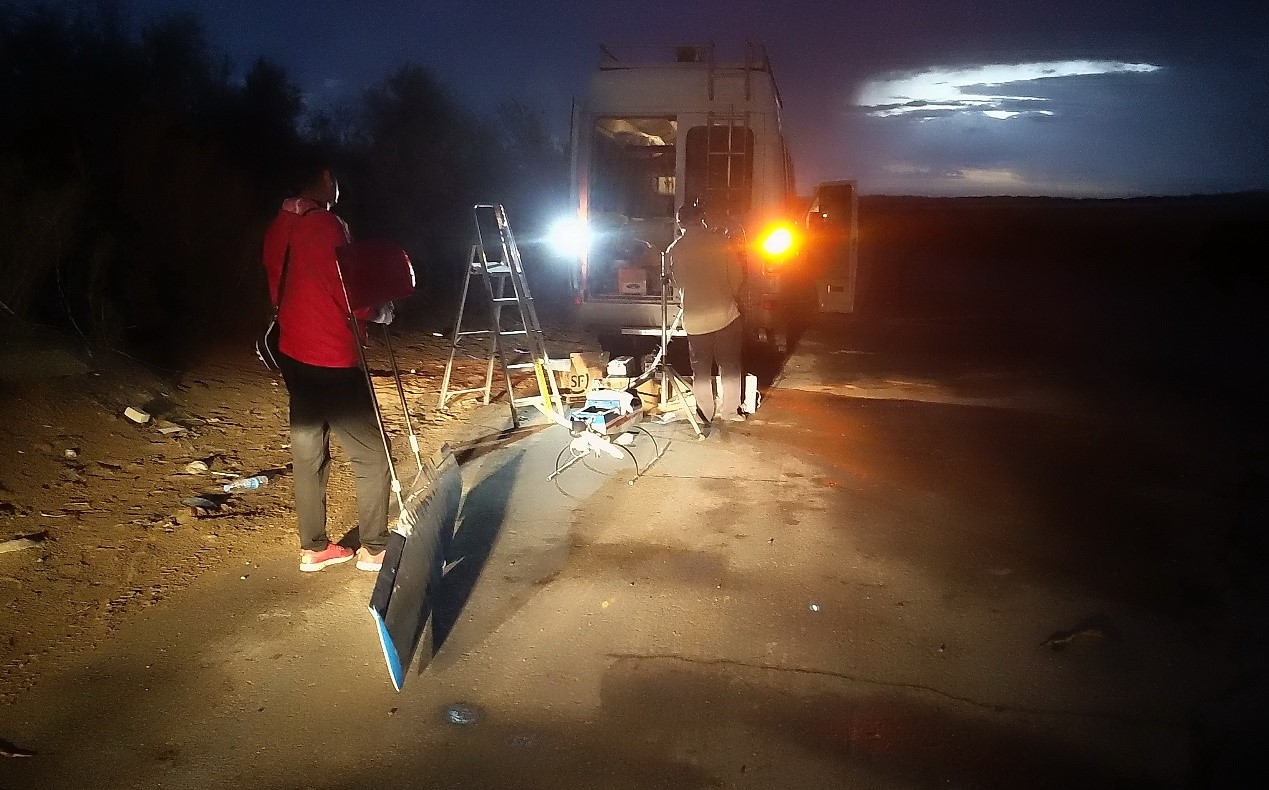An unmanned aviation vehicle(UAV) glided into the uninhabited central Taklamakan during a field observation campaign on18-24 July, 2017. It's the first time the lower atmosphere and land surface in Taklamakan are observed by a UAV. The UAV was developed by the Institute of Atmospheric Physics (IAP), CAS and the campaign was conducted by IAP, in collaboration with the Institute of Desert Meteorology, China Meteorological Administration.
Taklamakan is the largest desert in Asia with the finest sand in the world. It impacts atmospheric circulation and environment systems in China, e.g. the arid weather and climate in the west China and the dust processes over northern China. However, the adverse conditions in the desert make meteorological observations difficult, especially in the no-man region. The campaign marks a new phase of Chinese meteorologists’ atmospheric observation. With UAV, Chinese scientists can obtain more observation data in uninhabited wilderness including desert, plateau, ocean, Arctic and Antarctic.

The IAP-made UAV is specified with 4-meter wingspan and 500 km range (Image by IAP)

Scientists get prepared in the dawn twillight to fly the UAV. (Image by IAP)
